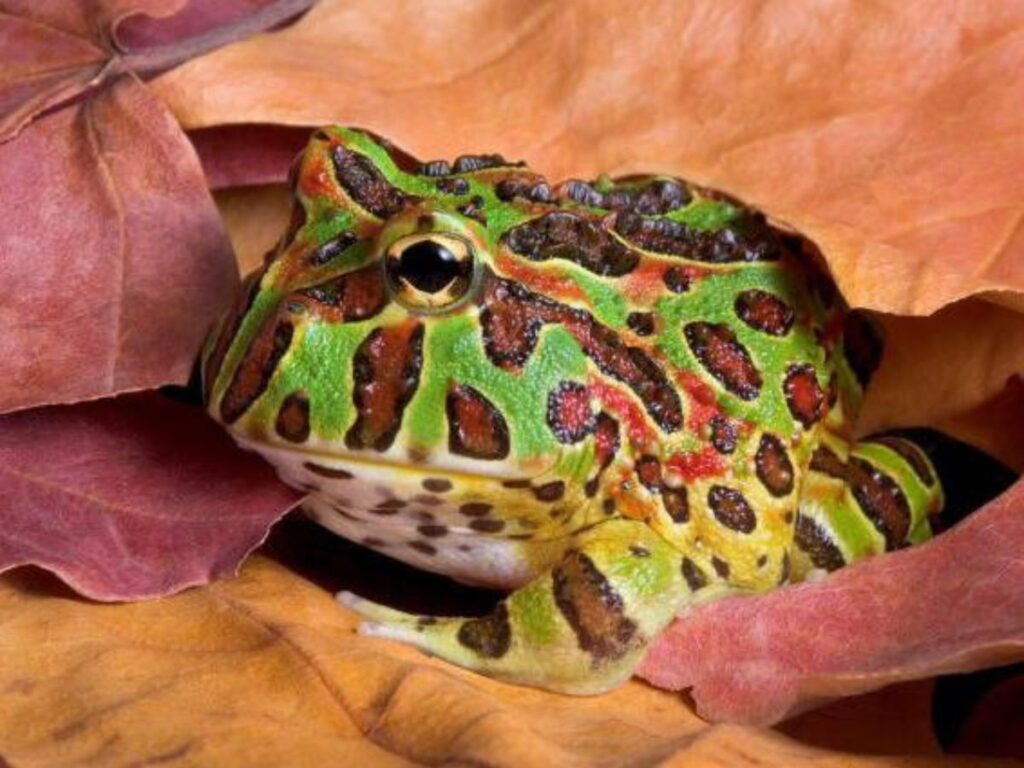🐸 How to Breed Pacman Frogs: A Beginner’s Guide
A Step-by-Step Intro to Reproducing Ceratophrys in Captivity
How to Breed Pacman Frogs - At a Glance
To breed Pacman frogs, you need a mature male and female, proper environmental triggers (like a simulated rainy season), and a separate breeding tank. Successful pairing leads to egg laying, followed by careful hatching and tadpole care. This guide walks you through each beginner-friendly step.
Breeding Pacman frogs (Ceratophrys spp.) in captivity can be a rewarding but delicate process. These iconic, round-bodied amphibians require very specific conditions to encourage mating and produce healthy offspring.
If you’re a beginner and wondering where to start, this guide outlines everything you need to know—from pairing adults to raising tadpoles.
We’ll cover:
- How to identify males vs. females
- How to set up a breeding environment
- How to care for eggs and tadpoles
- Tips to improve success rates and reduce stress

Step 1: Know Your Frog’s Sex and Age
Female Pacman Frog:
Larger, bulkier body (4–7″)
No vocal sac or nuptial pads
Rarely makes noise
Often more colorful
Male Pacman Frog:
Smaller body size (2.5–4″)
Dark nuptial pads (on front thumbs)
Vocal sac present; will croak or grunt
More active during breeding season
👉 How to Tell If Your Pacman Frog Is Male or Female
Only frogs that are over 12 months old and healthy should be considered for breeding.
Step 2: Simulate the Rainy Season (Brumation & Soaking Cycle)
To trigger breeding instincts, you’ll need to mimic their natural seasonal cycles.
Brumation Setup:
Lower temp to 68–70°F
Keep humidity slightly reduced (around 50%)
Brumate for 30–60 days
Light cycle: 10 hours ON / 14 hours OFF
Stop feeding and reduce misting
Keep frogs mostly buried with minimal disturbance
👉 Brumation in Pacman Frogs: Do They Hibernate?
Rehydration (Rain Simulation):
After brumation, move frogs to a separate rain chamber or shallow water container:
Temp: 80–82°F
Water depth: 2–3 inches of dechlorinated, clean water
Mist heavily and frequently to simulate rain
Duration: 4–7 days, with daily monitoring
Males may croak, chase, and try to mount females


Step 3: Watch for Amplexus and Egg Laying
Amplexus:
The male will climb onto the female’s back and grip behind her front arms
This can last for hours or even days
It’s a natural part of the reproductive process—don’t interrupt unless injury occurs
Egg Laying:
After successful amplexus, the female lays hundreds to thousands of eggs
Remove adults once eggs are deposited to prevent cannibalism

Step 4: Hatching and Tadpole Care
Hatching Tank Setup:
Use a shallow aquarium or plastic bin
Fill with dechlorinated water at 80°F
Add gentle aeration (air stone)
No substrate required
Hatching Timeline:
Eggs hatch within 48–72 hours
Tadpoles are free-swimming within 5–7 days
Feeding Tadpoles:
Days 1–3: No food needed (yolk sac provides nutrition)
Day 4+: Start feeding liquid fry food or finely crushed fish flakes
Day 7+: Introduce baby brine shrimp, micro worms, or boiled egg yolk
Step 5: Water Quality and Maintenance
| Task | Frequency |
|---|---|
| Remove waste | Daily |
| Partial water change | Every 2–3 days |
| Monitor ammonia/nitrites | Weekly |
| Full tank clean | Every 10–14 days |
Step 6: Metamorphosis to Froglets
Timeline:
Around 3–4 weeks, back legs appear
Front limbs follow shortly after
Tail reabsorbs during the next few days
Once the tail disappears, move froglets to a moist land setup
Bonus Tips for Breeding Success
- Always quarantine and monitor new breeder frogs
- Use spring or RO water (never tap water with chlorine)
- Label batches and separate froglets by size to avoid cannibalism
- Be prepared to rehome or raise a large number of frogs
- Feed froglets daily to avoid aggression
FAQ: Breeding Pacman Frogs
Q: How old do frogs need to be to breed?
A: At least 12–14 months and fully grown.
Q: Do Pacman frogs breed year-round?
A: No—they typically respond to seasonal triggers like cooler brumation periods followed by warm, wet conditions.
Q: How many babies can a female lay?
A: Between 500–2,000 eggs, depending on age and health.
Q: Can I breed different morphs together?
A: Yes, but be cautious—some morph combinations (like albino × albino) can result in health issues.
